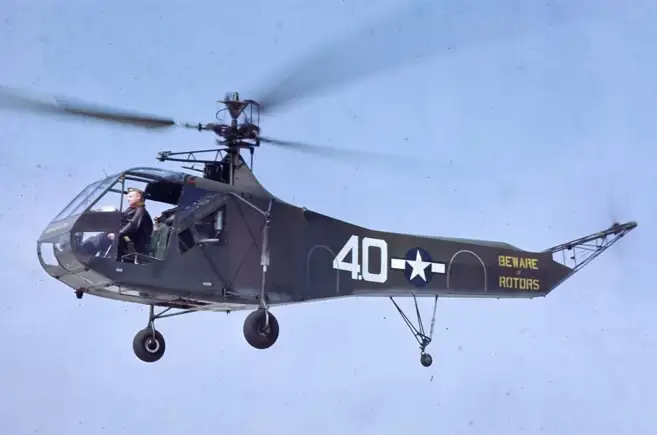4: Sikorsky R-4B

The Sikorsky R-4B was the first mass-produced helicopter. Powered by an 185hp radial piston engine, its performance was far from stellar. On a good day, it could carry a crew of two with a casualty in an external litter. Top speed was only 75mph, with a rather small range of 130 miles.
The R-4B wasn’t easy to fly either, with high vibration levels from the rotors feeding back through the controls to the pilot. While dealing with this they also had to manually operate the throttle to compensate for the changing aerodynamic loads and maintain a constant rotor speed.

Despite these challenges, the R-4 B proved to be a lifesaver, carrying out multiple rescues in the China-Burma-India theatre. Here, its performance was eroded by the high altitudes and humidity, and flights on occasion passed through 10,000 feet across high mountain passes. When loaded with casualties, running take-offs became necessary as the aircraft was too heavy to lift off vertically.
In the Pacific, the R-4B was used to move spare parts between aviation repair ships. However, these too would be pressed into rescue operations when required, including a six-week period from June to July 1945, when 75 soldiers were evacuated from the jungles of the Philippines under fire. Impressively at the start of the operation, some of the pilots had only 25 hours experience flying helicopters.


